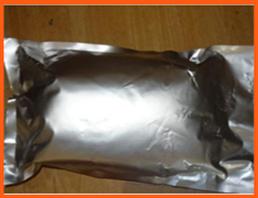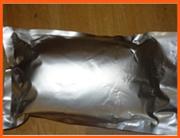| cimetidine |
| CAS No.: |
51481-61-9 |
| Synonyms: |
- N-Cyano-N'-methyl-N''-[2-[[(4-methyl-1H-imidazol-5-yl)methyl]thio]ethyl]guanidine;
- Cimetidine;
- 2-Cyano-1-methyl-3-[2-(5-methyl-1H-imidazol-4-yl-methylthio)ethyl]guanidine;
|
| Formula: |
C10H16N6S |
| Exact Mass: |
252.11600 |
| Molecular Weight: |
252.33900 |
| PSA: |
114.19000 |
| LogP: |
1.37918 |
Cimetidine (INN) is a histamine H2 receptor antagonist that inhibits stomach acid production. It is largely used in the treatment of heartburn and peptic ulcers.
Cimetidine was discovered in 1971. It has been marketed by GlaxoSmithKline (which is selling the brand to Prestige Brands) under the trade name Tagamet (sometimes Tagamet HB or Tagamet HB200). Cimetidine was approved in the UK in 1976, and was approved in the US by the Food and Drug Administration for prescriptions starting January 1, 1979.
| Properties |
| Appearance & Physical State: |
white solid |
| Density: |
1.27 g/cm3 |
| Melting Point: |
139-144ºC |
| Boiling Point: |
488ºC at 760 mmHg |
| Flash Point: |
248.9ºC |
| Water Solubility: |
0.5 g/100 mL at 20 ºC |
| Storage Condition: |
2-8ºC |
use
This has the significant inhibitory effect of gastric acid secretion, gastric acid secretion can significantly inhibit basis and night, also can inhibit by histamine, stomach gastrin-releasing peptide and insulin stimulation such as food and gastric acid secretion, and reduce the acidity, the erosive gastritis caused by chemical stimulation has prevention and protection, to stress ulcer and upper gastrointestinal bleeding has obvious curative effect. It is used to treat duodenal ulcer, gastric ulcer, upper gastrointestinal bleeding, chronic colitis, herpes zoster, chronic urticaria. There is a certain role to play against virus and immune enhancement.


 China
China
